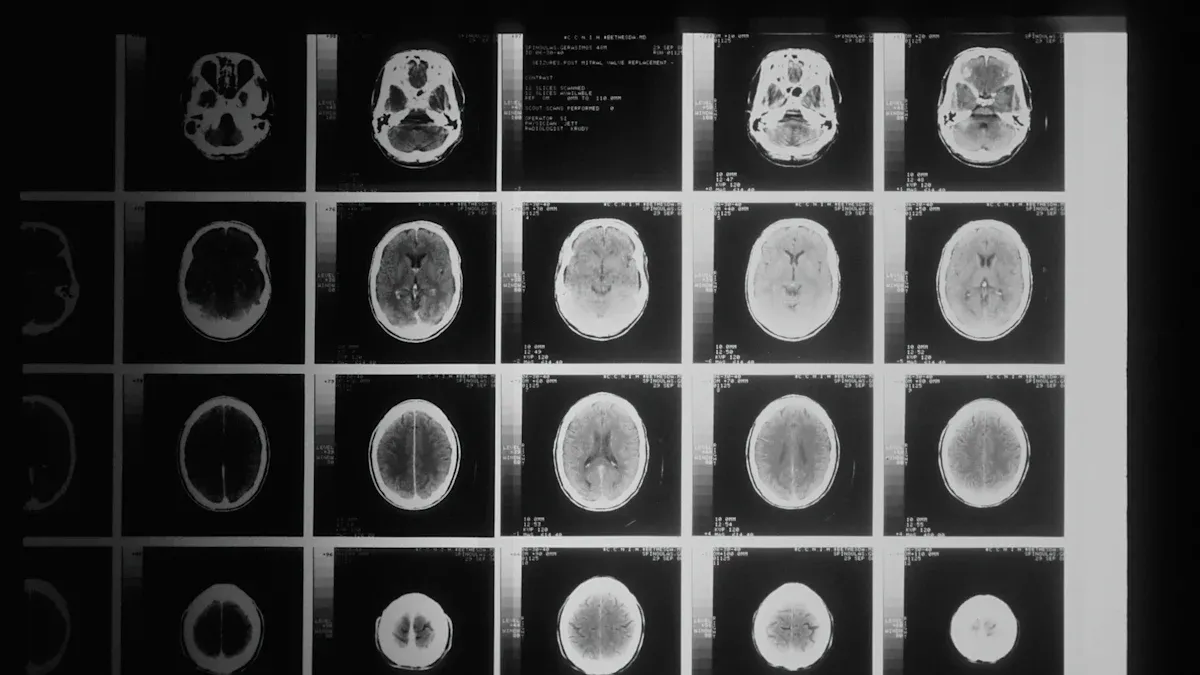What Makes Some Cancers More Aggressive Than Others

Are All Forms of Cancer Aggressive? The Truth About Slow-Growing Cancers lies in understanding the factors that influence cancer behavior, such as genetic mutations, tumor grade, and the ability of cancer cells to invade nearby tissues. For instance, triple-negative breast cancer (TNBC), which accounts for 10%-15% of all breast cancers, is known for its rapid spread, particularly in younger women with BRCA1 gene mutations. Similarly, tumors with the H63D mutation exhibit a higher likelihood of metastasis, demonstrating how specific genetic changes contribute to aggressive cancer behavior. Research also shows that migration, rather than cell proliferation, is a stronger predictor of tumor aggressiveness and its impact on survival rates. These findings emphasize why not all cancers are equally aggressive, with some progressing much slower than others.
Key Takeaways
Changes in genes, like BRCA1, affect how dangerous cancer is. Learning about these changes helps create better treatments.
Tumor grade shows how cancer acts. High-grade tumors grow and spread quickly, so finding them early is very important.
Cancer cell movement predicts danger more than how fast they grow. Studying movement can lead to better treatments.
Fast-growing cancers need stronger treatments. Custom treatment plans work better and cause fewer problems.
Finding cancer early saves lives. Regular check-ups can spot cancer before it spreads, giving more treatment choices.
What Determines Cancer Aggressiveness?

Genetic Mutations
Role of oncogenes and tumor suppressor genes
Genetic mutations play a central role in determining how aggressive a cancer becomes. Oncogenes, which are mutated forms of normal genes, drive cancer growth by promoting cell division. Tumor suppressor genes, on the other hand, act as brakes to prevent uncontrolled cell growth. When these genes mutate, the brakes fail, allowing cancer cells to multiply unchecked. For example, mutations in the BRCA1 and BRCA2 genes are linked to aggressive breast and ovarian cancers. These mutations disrupt DNA repair mechanisms, increasing the likelihood of further genetic damage.
How mutations drive uncontrolled cell growth
Mutations like the H63D polymorphism have been shown to increase cancer aggressiveness. In pancreatic ductal adenocarcinoma (PDAC), this mutation leads to a higher chance of metastasis and neuronal invasion. It also triggers a type-II immune response, which can paradoxically promote tumor progression by suppressing the immune system. Such findings highlight how specific genetic changes can make cancers more invasive and harder to treat.
Tumor Grade and Proliferation Rates
What tumor grade reveals about cancer behavior
Tumor grade measures how abnormal cancer cells look under a microscope. High-grade tumors, such as Grade 3, tend to grow and spread faster than low-grade ones. Studies comparing tumor grades show significant differences in aggressiveness. For instance, the p-value for Grade 3 versus Grade 1 tumors is less than 8.7e-06, indicating a strong correlation between higher grades and increased proliferation rates.
How fast cancer cells divide and spread
Cancer cells in high-grade tumors divide more rapidly, making them harder to control. However, research suggests that migration, rather than proliferation, is a stronger predictor of aggressiveness. A study analyzing over 1,000 breast cancer tumors found that migration levels were more closely linked to patient survival than proliferation rates.
Determinants | Findings |
|---|---|
Migration Levels | Strongly associated with patient survival, more so than proliferation levels. |
Proliferation Levels | Increased with tumor aggressiveness but less predictive of patient survival compared to migration. |
Study Population | More than 1,000 TCGA breast cancer tumors analyzed for migration and proliferation levels. |
Tumor Microenvironment
Influence of surrounding tissues and blood supply
The tumor microenvironment, which includes surrounding tissues, blood vessels, and signaling molecules, significantly impacts cancer aggressiveness. Tissue Factor (TF), for example, enhances TGFβ signaling, which promotes tumor cell migration. This interaction makes cancers more invasive, especially in aggressive types like triple-negative breast cancer.
Role of immune system evasion in aggressiveness
Cancer cells often evade the immune system by creating an environment that suppresses immune responses. This allows them to grow and spread without interference. The H63D mutation, linked to a type-II immune response, exemplifies how the immune system can inadvertently aid cancer progression. By understanding these mechanisms, researchers can develop therapies to counteract immune evasion and slow cancer growth.

Are All Forms of Cancer Aggressive? The Truth About Slow-Growing Cancers
Differences Between Aggressive and Slow-Growing Cancers
Examples of aggressive cancers (e.g., pancreatic, lung)
Some cancers, like pancreatic and lung cancer, are known for their aggressive nature. These cancers grow rapidly and often spread to other parts of the body before being detected. For instance, pancreatic cancer frequently invades nearby organs, making it difficult to treat. Similarly, lung cancer often metastasizes to the brain or bones, reducing survival rates. Aggressive cancers typically have high proliferation rates, which means their cells divide quickly. This rapid growth makes them harder to control and contributes to poorer outcomes.
Examples of slow-growing cancers (e.g., prostate, thyroid)
In contrast, slow-growing cancers, such as prostate and thyroid cancer, tend to progress at a much slower pace. Prostate cancer often remains localized for years, allowing for early detection and treatment. Thyroid cancer, particularly the papillary type, usually grows so slowly that many patients live normal lives without significant complications. These cancers are often well-differentiated, meaning their cells closely resemble normal cells, which helps limit their growth and spread.
Characteristic | Well-Differentiated Cancers | Poorly Differentiated Cancers |
|---|---|---|
Appearance | Look and behave more like normal cells | Look immature and behave differently from normal cells |
Growth Rate | Tend to grow and spread slowly | Tend to grow quickly and spread more often |
Grade | Low grade | High grade |
Prognosis | Better prognosis | Worse prognosis |
Factors Contributing to Slow Growth
Well-differentiated cells and minimal genetic damage
Slow-growing cancers often consist of well-differentiated cells. These cells retain many characteristics of normal cells, including their structure and function. This similarity limits their ability to grow uncontrollably. Additionally, these cancers usually have minimal genetic damage, which reduces the likelihood of mutations that drive rapid growth. For example, prostate cancer often progresses slowly due to its well-differentiated nature.
How some cancers remain localized without spreading
Some cancers remain localized because they lack the ability to invade nearby tissues or spread through the bloodstream. These cancers often have a lower grade, meaning their cells divide at a slower rate. For instance, thyroid cancer typically stays confined to the thyroid gland for years. This localized behavior allows for easier management and significantly improves the prognosis.
Slow-growing cancers, while less aggressive, still require monitoring to ensure they do not progress or spread over time.
How Aggressiveness Impacts Treatment and Prognosis

Treatment Challenges
Difficulty in targeting fast-growing cancers
Aggressive cancers grow quickly, making them harder to target with treatments. Their rapid cell division often outpaces the effects of therapies like chemotherapy or radiation. For example, high-grade cancers, such as Grade 3 tumors, require more aggressive treatment approaches. These cancers often spread before detection, reducing the effectiveness of localized treatments.
The challenge lies in the unpredictable nature of these cancers. Their ability to invade nearby tissues and metastasize complicates treatment plans. Doctors must act swiftly, often combining multiple therapies to slow the cancer's progression. However, this urgency can lead to side effects that impact your overall health.
Resistance to standard therapies
Aggressive cancers frequently develop resistance to standard treatments. This resistance occurs because cancer cells adapt and evolve, rendering therapies less effective over time. For instance, triple-negative breast cancer (TNBC) often resists chemotherapy, leaving fewer options for treatment.
When resistance occurs, doctors may need to explore advanced options like targeted therapies or immunotherapy. These treatments aim to overcome resistance by focusing on specific cancer characteristics. However, their availability and success rates vary, making treatment even more challenging.
Prognosis and Survival Rates
Why aggressive cancers often have poorer outcomes
Aggressive cancers typically lead to poorer outcomes due to their rapid growth and spread. High-grade tumors, for example, require intensive treatment but still carry a lower chance of survival. The table below highlights how cancer grade impacts treatment and prognosis:
Cancer Grade | Description | Treatment Implications | Prognosis Outcomes |
|---|---|---|---|
Grade 1 | Low aggressiveness | Candidates for active surveillance | Higher chance of survival |
Grade 2 | Moderate aggressiveness | May require standard treatment | Moderate chance of survival |
Grade 3 | High aggressiveness | Requires aggressive treatment | Lower chance of survival |
Aggressive cancers also tend to metastasize, which significantly reduces survival rates. For example, invasive breast cancers have a 99% survival rate when localized but only 30% when they spread to distant organs. TNBC shows an even sharper decline, with survival rates dropping from 91% (localized) to just 12% (distant).
Importance of early detection and intervention
Early detection plays a crucial role in improving outcomes for aggressive cancers. When caught early, treatments can focus on localized tumors before they spread. This approach increases survival rates and reduces the need for aggressive therapies.
For instance, localized invasive breast cancers have a 99% survival rate, emphasizing the importance of regular screenings. By staying proactive, you can catch potential issues early and improve your chances of successful treatment. Early intervention not only saves lives but also enhances the quality of life during and after treatment.
Can Aggressive Cancers Be Managed?
Advances in Treatment
Targeted therapies and immunotherapy
Managing aggressive cancers has become more promising with the development of targeted therapies and immunotherapy. Targeted therapies focus on specific molecules or pathways that cancer cells rely on to grow. For example, drugs like trastuzumab target HER2-positive breast cancer cells, slowing their growth and improving survival rates. These therapies minimize damage to healthy cells, reducing side effects compared to traditional treatments.
Immunotherapy, on the other hand, empowers your immune system to fight cancer. Treatments like immune checkpoint inhibitors block proteins that prevent immune cells from attacking tumors. This approach has shown remarkable success in cancers like melanoma and non-small cell lung cancer. By boosting your body's natural defenses, immunotherapy offers hope for managing even the most aggressive cancers.
Role of precision medicine in managing aggressiveness
Precision medicine tailors treatment to your cancer's unique genetic and molecular profile. This approach identifies specific mutations or biomarkers driving the cancer's growth. For instance, patients with EGFR mutations in lung cancer may benefit from targeted drugs like osimertinib. Precision medicine ensures that treatments are more effective and less toxic by focusing on what works best for your specific case.
Hope for the Future
Ongoing research and clinical trials
Ongoing research continues to uncover new ways to manage aggressive cancers. Clinical trials test innovative therapies, such as CAR-T cell therapy, which reprograms your immune cells to attack cancer. These trials also explore combinations of treatments, like pairing immunotherapy with chemotherapy, to improve outcomes. Advances in technology, such as liquid biopsies, allow for earlier detection and monitoring of treatment responses.
Importance of personalized treatment plans
Personalized treatment plans hold great promise for improving outcomes. By analyzing your tumor's characteristics, doctors can predict how it will respond to different therapies.
Recent research using GeoMx DSP and multiplex immunofluorescence has shown that non-responding high-TIL cases exhibit reduced antigen presentation and immune activation, while responding low-TIL cases demonstrate enhanced antigen presentation and metabolic adaptations. This indicates the potential for personalized treatment plans to improve outcomes by identifying resistance biomarkers for tailored therapies.
Personalized plans not only enhance treatment effectiveness but also reduce unnecessary side effects. They represent a future where cancer care is more precise, improving both survival rates and quality of life.
Cancer aggressiveness depends on genetic, biological, and environmental factors. For example, mutations in genes like BRCA1 increase the risk of aggressive cancers, while environmental factors such as air pollution can influence cancer development over time.
Key Statistics:
Statistic
Value
Lifetime risk of breast cancer for women
Annual breast cancer diagnoses in women
About 245,000
Annual breast cancer diagnoses in men
About 2,200
Migration, rather than proliferation, plays a stronger role in determining cancer aggressiveness and patient survival.
Understanding these factors helps doctors create better treatment plans. Advances like immunotherapy and precision medicine offer hope for managing even the most aggressive cancers. By staying informed, you can take proactive steps toward early detection and improved outcomes.
FAQ
What makes some cancers grow faster than others?
Certain cancers grow faster due to genetic mutations, high tumor grades, and their ability to invade nearby tissues. These factors allow cancer cells to divide rapidly and spread to other parts of your body, making them more aggressive.
Can slow-growing cancers become aggressive over time?
Yes, slow-growing cancers can become aggressive if they acquire additional genetic mutations or environmental triggers. Regular monitoring helps detect changes early, allowing doctors to adjust your treatment plan and prevent progression.
How does early detection improve cancer outcomes?
Early detection allows doctors to treat cancer before it spreads. Localized cancers respond better to treatment, increasing survival rates. For example, breast cancer caught early has a 99% survival rate compared to 30% when it spreads.
Are aggressive cancers always fatal?
No, aggressive cancers are not always fatal. Advances in treatments like immunotherapy and precision medicine have improved survival rates. Early intervention and personalized care can help manage even the most aggressive types effectively.
What role does the immune system play in cancer aggressiveness?
Your immune system can either fight cancer or, in some cases, help it grow. Some cancers evade immune responses, creating an environment that promotes their spread. Immunotherapy works by reactivating your immune system to target and destroy cancer cells.
Tip: Regular screenings and a healthy lifestyle can reduce your cancer risk and improve early detection chances.
See Also
Exploring Various Cancer Types Associated With AIDS
Key Features and Insights Into Cholangiocarcinoma
A Comprehensive Overview of Glioblastoma Characteristics
